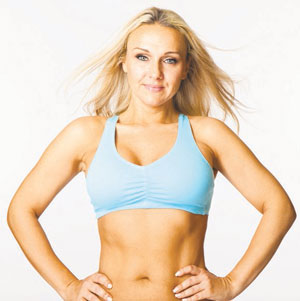 Early detection is crucial to successful breast cancer treatment. Protect yourself with these life-saving tips from Maimonides Medical Center, the American Cancer Society, and the Susan G. Komen Breast Cancer Foundation:
Early detection is crucial to successful breast cancer treatment. Protect yourself with these life-saving tips from Maimonides Medical Center, the American Cancer Society, and the Susan G. Komen Breast Cancer Foundation:
• Women should begin screenings at age 40 and have repeat mammograms every one to two years.
• All women 50 and older should have a screening mammogram every one to two years.
• Women who have or had a mother or sister with breast cancer should begin yearly mammograms earlier than the age the family member was diagnosed.
• Certain women at very high risk of breast cancer should also have a breast MRI along with their yearly mammogram. Ask your doctor if you need an MRI or a breast ultrasound.
• Clinical breast exams, where the health care professional checks the breasts using the fingers, and monthly breast self-examinations are recommended in addition to a mammography.
• Women age 20 and older should have a clinical breast exam every three years.
• Women age 40 and older should have a clinical breast exam every year.
• Women age 20 and older should perform monthly breast self-exams.
Breast self-exams are not a substitute for routine screening mammograms, but a self-examination can be an important awareness tool for many women. It helps them to learn how their breasts normally feel, and discuss the emergence of any lumps with their doctor. Conduct the self-exam about three to five days after your period starts, when your breasts are not as tender or lumpy. If you have gone through menopause, do your exam on the same day every month.
How to perform your breast self-examination:
• Lie on your back. Place your right hand behind your head. With the middle fingers of your left hand, gently yet firmly press down using small motions to examine the entire right breast, covering all of the breast tissue.
• While sitting or standing, examine your armpit, because breast tissue extends to that area. Gently squeeze the nipple, checking for discharge.
• Repeat the process on the left breast, keeping in mind that most women have some lumps, so don’t be concerned about figuring what constitutes a lump or abnormal area. Your goal is to find anything new or different, and then see your health care provider for an evaluation.
• Next, stand in front of a mirror with your arms by your side.
• Look at your breasts directly and in the mirror for changes in skin texture, such as dimpling, puckering, indentations, shape, contour, the nipple or other parts of the breast turning inward, or skin that looks like an orange peel.
• Repeat with your arms raised above your head.
Other symptoms to watch for:
• A lump, hard knot, or thickening inside the breast or underarm area.
• Swelling, warmth, redness, or darkening of the breast.
• Change in the size or shape of the breast.
• Itchy, scaly sore or rash on the nipple.
• New pain in one spot that doesn’t go away.

































